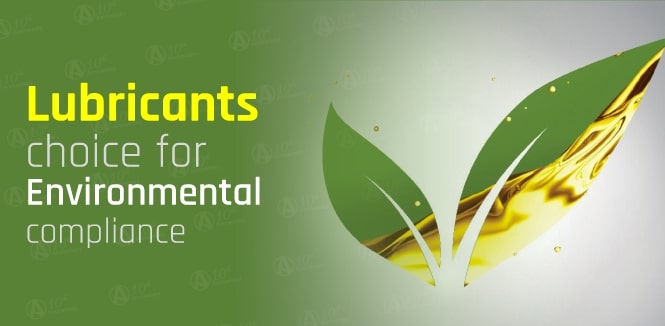- Armor Blog
- Consumer Education
- Environmentally Acceptable Lubricants: Choice for Environmental Compliance

Reason for Selecting the Environmentally Friendly Lubricants
Environmentally Acceptable Lubricants (EALs) are defined as lubricants that are biodegradable and have a low environmental impact. EALs are designed to break down naturally in the environment, which means they are less harmful to the planet. They are also less likely to pollute waterways and soil, which can have a negative impact on wildlife and ecosystems.
EALs are becoming increasingly popular as businesses and individuals become more aware of the environmental impact of lubricants. There are a number of different types of EALs available, so you can find one that meets your specific needs.
Here are some of the benefits of using Environmentally Acceptable Lubricants (EALs):
- They are better for the environment.
- They are less likely to pollute waterways and soil.
- They can help to reduce greenhouse gas emissions.
- They can extend the life of your equipment.
- They can save you money on maintenance costs.
If you are looking for a lubricant that is good for the environment and your equipment, then EALs are a great option.
Quality of Lubrication Oil
The quality of Environmentally Acceptable Lubricants (EALs) is generally good. These lubricants are designed to meet the same performance standards as traditional lubricants, but they are also designed to be biodegradable and have a low environmental impact.
There are a number of different types of EALs available, so you can find one that meets your specific needs. Some of the most common types of EALs include:
- Biodegradable Mineral Oils: These lubricants are made from petroleum, but they are modified to make them biodegradable.
- Synthetic Biodegradable Oils: These lubricants are made from synthetic materials, such as esters and polyalphaolefins (PAOs).
- Water-based Lubricants: These lubricants are made from water and a thickening agent.
- Bio-based Lubricants: These lubricants are made from renewable resources, such as vegetable oils and animal fats.
The quality of EALs can vary depending on the type of lubricant and the manufacturer. However, in general, EALs are a good quality lubricant that can provide the same performance as traditional lubricants.
Factors that contribute to the quality of Environmentally Acceptable Lubricants (EALs):
- Base Oil: The base oil is the foundation of any lubricant, and it is important to choose a base oil that is high quality and biodegradable.
- Additives: Additives are added to lubricants to improve their performance and properties. It is important to choose additives that are biodegradable and environmentally friendly.
- The manufacturing process: The manufacturing process can also affect the quality of EALs. It is important to choose a manufacturer that uses a process that is environmentally friendly and produces a high-quality lubricant.
If you are considering using EALs, it is important to do your research to find a high-quality lubricant that meets your specific needs. You can also talk to your equipment manufacturer to get their recommendations.
What is Vessel General Permit?
Vessel General Permit is a Clean Water Act National Pollutant Discharge Elimination System Permit. This permit covers 26 different types of discharges that could be a threat to the aquatic ecosystem. It has set its criteria that the companies should produce the lubricant that can reduce the threat of the marine environment.
Vessel General Permit is one of the environmentally friendly lubricants that one should be aware of it. Its formulation is environmental friendly and it fulfills the needs of not only the marine applications but also the parts that are close to the ports. The main reason of selecting the environmentally friendly lubricant oils is that it does not harm the environment. The use of the lubricant oil on the vessels in unavoidable. The Vessel General Permit can reduce the negative impact on the aquatic environment. It has the potential to check and identify the set of standards that these lubricants must meet the potential that lowers the factors of damage to the environment.
What is Primary biodegradation and Ultimate biodegradation?
Biodegradable lubricants that are classified by the EPA as environmentally acceptable lubricants (EALs) can be degraded till 60% in 28 days. The chemical compound in the lubricant oil lowers the threat in an aquatic environment. Primary and Ultimate are the two types of biodegradations.
The main function of the Primary biodegradation is to break down the chemical compounds into pieces.fter going through this procedure, the chemical compounds are not able to perform the function it was created for. Ultimate biodegradation breaks down the complete chemical compounds into carbon dioxide, water and mineral salts. Both lubricants (Primary biodegradation and Ultimate biodegradation) take the responsibility of breaking down the physical breakdown of the lubricant.
EALs: The Lubricants of the Future
Environmentally acceptable lubricants (EALs) are designed to break down naturally in the environment, making them a more sustainable option than traditional lubricants. EALs offer a number of benefits over traditional lubricants, including:
- Reduced Pollution: EALs are less likely to pollute waterways and soil, which can have a negative impact on wildlife and ecosystems.
- Improved Fuel Economy: EALs can help to improve fuel economy by reducing friction and wear. This can save you money on fuel costs.
- Extended Equipment Life: EALs can help to extend the life of your equipment by protecting it from wear and tear. This can save you money on maintenance costs.
If you are looking for a lubricant that is good for the environment and your equipment, then EALs are a great option.
With the change of time and new inventions these days many applications employ Environmentally Acceptable Lubricants (EALs). The marine industry is one of the best examples of the high-quality of the usage of the lubricant that are utilized in different applications from hydraulics to gear systems.
Armor Lubricants Committed to Environmental Sustainability
The main reason of selecting the environmentally friendly lubricants is that it does not harm the environment. Biodegradable lubricants classified by the EPA as environmentally acceptable lubricants can be degraded till 60% in 28 days.
At Armor Lubricants, we are committed to providing high-quality, eco-friendly lubricants that exceed industry standards. Our commitment to quality, innovation, sustainability and environmental responsibility ensures that we deliver the best lubricant solutions for your needs. Explore our full range of products and solutions, visit us here.




 Spear Lubricants
Spear Lubricants Armada lubricant
Armada lubricant Ace lubricants
Ace lubricants Perfect lubricants
Perfect lubricants Enzo lubricants
Enzo lubricants Lawrence lubricants
Lawrence lubricants